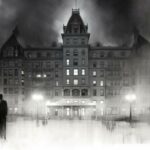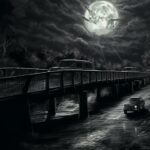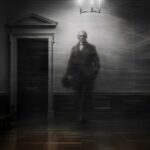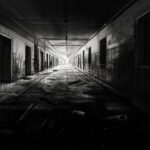Table of Contents
As the sun sets on the mighty Mississippi, Memphis, Tennessee, awakens with tales of specters and eerie legends that chill the spine. Brave souls venture through the city’s haunted landmarks, where history’s echoes seem to reverberate through the ether. This guide invites the intrepid to explore the most haunted places in Memphis, where the veil between worlds appears thinnest.
If you are doing any kind of paranormal investigation here, you might want to take a look at our ghost hunting equipment list. Locations like this get a reputation because they are high activity and you don’t need much to see for yourself.
Orpheum Theatre

Nestled at the intersection of Beale Street and Main, the Orpheum Theatre in Memphis, Tennessee, stands as a bastion of the performing arts with a twist of the supernatural. For almost a century, this entertainment palace has not only been a stage for stars and symphonies but also a playground for phantoms. The theatre’s haunted history is as rich as the velvet curtains that grace its stage, with ghostly tales that have become as much a part of its legacy as the performances themselves.
One of the most famous spectral inhabitants is a little girl named Mary, whose spirit has become synonymous with the Orpheum. Theatre-goers and staff alike whisper about her mischievous antics, from playing with the theatre’s lights to giggling in the shadows. Mary, dressed in a 1920s white dress, is said to hold court in her favorite seat, C-5, watching over the productions and ensuring that the show always goes on, even from beyond the grave.
Another ghostly presence is that of David, a former projectionist whose love for the theatre was so strong that not even death could part him from his beloved projection booth. Some claim to have seen his apparition flickering like an old film reel, a silent guardian of the cinema’s bygone era.
The Orpheum Theatre’s haunted history is no mere footnote; it is the soul of the place. With every creak of the aged floorboards and every unexplained draft, the theatre’s spirits remind us that they are as much a part of the fabric of the Orpheum as the performers who take the stage. The theatre has become a house of spirits, with its phantoms as enduring as the art that lives within its walls.
So, when the lights dim and the curtain rises, the audience might find themselves sharing the show with more than just the living. The Orpheum Theatre’s ghostly patrons ensure that it is a place where the past is always present, and the air is thick with the echoes of applause from both the seen and the unseen.
I was chilling at the Orpheum, you know, in Memphis, when I swear I felt this cold breeze and heard this little girl giggle. They say it’s the ghost of Mary, who loves to hang out in seat C-5 and mess with the lights during shows.
Earnestine & Hazel’s
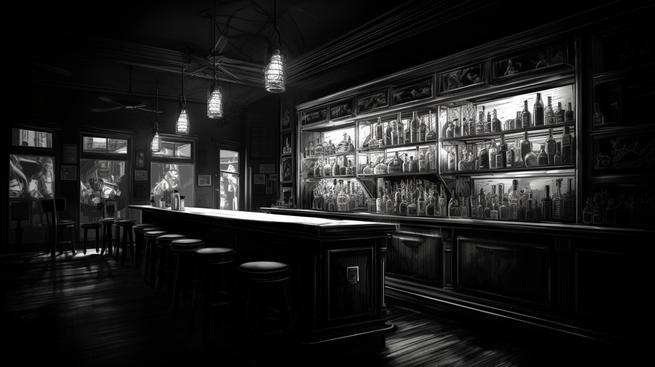
Earnestine & Hazel’s in Memphis, Tennessee, carries a ghostly legacy that whispers from its very walls. This storied establishment, with roots burrowing deep into the late 1800s, began its journey as a house of worship. However, as time marched on, the building shed its sacred skin to don the roles of a pharmacy and a sundry store. It was not long before the notes of jazz filled the air, transforming the space into a lively café that moonlighted as a brothel. The echoes of its varied past eventually settled into the steady hum of a bar, but not without leaving behind a few spectral residents.
The hauntings at Earnestine & Hazel’s are as much a part of the bar as the beer on tap. Employees and patrons alike have reported unnerving encounters with the supernatural. From a jukebox that plays the soundtrack of the spirits—selecting songs with eerie precision to match the conversations at hand—to orbs that dance through the air like lost souls at a spectral ball, the bar is no stranger to the paranormal.
Whispers from beyond have been known to slither through the walls, some even calling out names as if the spirits retain a touch of the living’s familiarity. These occurrences are not just tricks of the light or drafts in an old building; they are signs of an otherworldly presence, deeply woven into the fabric of Earnestine & Hazel’s.
Karen Brownlee, a long-time bartender and a fixture as solid as the bar itself, has served drinks and stories for over a decade. Despite her years of service, she approaches the topic of the bar’s paranormal residents with a mix of reverence and reluctance, wary of disturbing the spectral tenants that have become her unusual colleagues.
The bar’s haunted history is not just a tale to tell—it’s the heartbeat of the establishment, a living entity that continues to attract thrill-seekers and the curious. Whether one is there for a cold drink or a brush with the afterlife, Earnestine & Hazel’s promises an experience that’s out of this world.
I was just chilling at Earnestine & Hazel’s when the jukebox flipped on by itself, playing a tune that perfectly matched what we were jabbering about. Gave me the heebie-jeebies, especially when I spotted those weird glowing orbs floating around like they were grooving to the music.
The Woodruff-Fontaine House

The Woodruff-Fontaine House in Memphis, Tennessee, stands as a beacon of the city’s past, its walls echoing with stories that chill the bones. This grand residence, which Amos Woodruff, a prominent business tycoon, built in the early 1870s, serves as a testament to his success and influence. Woodruff’s endeavors in carriage-making, construction, and various other industries made him a pillar of the Memphis community and a figure of admiration.
However, beneath the surface of this opulent French Victorian mansion lie tales that are not as warm as the welcome it once offered. The house, which now operates as a museum, is rumored to be the stomping ground for spirits from its storied past. Visitors and staff alike whisper of encounters with the otherworldly, a clear sign that some former inhabitants may have never checked out.
One such spirit is that of a genteel woman, believed to be Mollie Woodruff Henning, Amos Woodruff’s daughter-in-law. She graces the halls with her presence, her ghostly figure often dispensing unsolicited advice and suggestions as if she still cares for the well-being of the house and its guests. Her demeanor is always described as polite, a true lady of her time.
Contrasting with Mollie’s gentle haunt is a male entity known for his less-than-cordial behavior. His identity remains a mystery, but his rude and disruptive antics have earned him a reputation amongst those who have felt his presence. He is the proverbial thorn in the side of the Woodruff-Fontaine House’s spectral family.
The air in the house is thick with history, and the echoes of the past play out like a broken record. Those who visit can’t help but feel the weight of centuries-old dramas unfolding around them. The house is not just a collection of rooms and antiques; it stands as a synecdoche for Memphis’ rich and complex history, with each creaking floorboard and whispered story adding to its enigmatic allure.
Whether one is a skeptic or a believer, the haunted reputation of the Woodruff-Fontaine House is hard to ignore. It’s a place where the past refuses to be forgotten, and the line between the living and the dead seems to blur. This Memphis landmark invites the brave and the curious to walk its halls and perhaps encounter a ghostly resident or two, forever woven into the fabric of this Southern city’s haunted heritage.
I was wandering through the old Woodruff-Fontaine House, and I swear I saw Mollie’s ghost, just floating up the stairs like she owned the place, her dress trailing behind her like mist. It gave me the heebie-jeebies, but it was kinda cool to think she’s still hanging around her old home.
Graceland

Graceland, the once tranquil Memphis mansion that became synonymous with the King of Rock ‘n’ Roll, Elvis Presley, now echoes with whispers of the supernatural. Since the star’s untimely demise in 1977, visitors have flocked not only to pay homage to his legacy but also to catch a glimpse—or perhaps a chill—from the alleged ghost of Elvis himself.
The heart of these spectral stories beats strongest in the Graceland foyer, where countless fans report a shiver running down their spine, a sensation some attribute to the proximity of the bathroom where Elvis took his final breath. This eerie encounter is just one of many that fuel the folklore that Presley’s spirit has yet to leave the building.
Tales of mysterious figures and unexplained occurrences have become part of Graceland’s fabric. Some visitors have sworn to see Elvis’s reflection in the glass and mirrors of the mansion, while others recount hearing his voice, as if the King were holding court in his castle once more. These anecdotes, shared with both fear and fascination, have turned Graceland into a magnet for those chasing the thrill of the paranormal.
But it’s not just fleeting glimpses and ghostly whispers that suggest the presence of Presley’s spirit. The very air of Graceland seems to hum with the energy of the past, as if the walls themselves are crooning with stories of yesteryear. Whether it’s the power of suggestion or something more spectral, the idea that Elvis’s essence remains part of his beloved home has become an indelible part of Graceland’s mystique.
In essence, Graceland has transformed from merely an opulent estate to a vessel carrying the King’s legacy, both in history and in spirit. While skeptics may wave away these ghostly claims, the faithful and the curious continue to keep vigil, hoping to encounter the shade of Elvis, the eternal showman, ensuring that his memory—and maybe his ghost—never leaves the stage.
I was just wandering through Graceland’s halls when I swear I caught a glimpse of Elvis’s shadow slipping around a corner, and the air got all cold and tingly. It’s like the King’s still rocking his home, man.
The Peabody Hotel
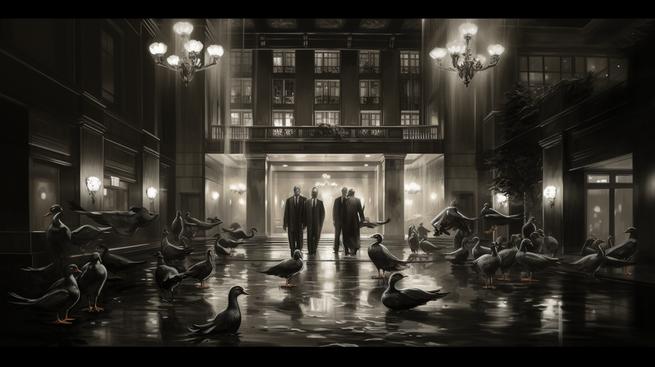
The Peabody Hotel in Memphis, Tennessee, is not only a beacon of luxury and tradition with its famous duck parade, but it also harbors whispers of the supernatural. Since its grand opening in 1869, the hotel has become a cornerstone in Memphis history, nestled at 149 Union Ave. But it’s the eleventh floor that often sends shivers down the spines of guests and staff alike, as it’s reputed to be the epicenter of the hotel’s ghostly activity.
Legend has it that the specters roaming the corridors are remnants from a bygone era, perhaps guests who checked in but never truly checked out. The eleventh floor, in particular, seems to be stuck in a loop of the past, with guests reporting unexplained noises, ghostly apparitions, and eerie feelings of being watched. These paranormal experiences have turned the hotel into a magnet for ghost hunters and thrill-seekers looking to catch a glimpse of the otherworldly residents.
The story of the Peabody’s haunted history is as much a part of Memphis lore as the ducks are a part of the hotel’s identity. It’s a case where the hotel’s walls could tell a thousand stories—if only they could talk. The Peabody, a grand dame of Southern hospitality, wears its haunted reputation like a badge of honor, adding an extra layer of mystique to its already charming character.
While the ducks waddle down to the lobby fountain in a parade that’s the embodiment of the hotel’s quirky charm, the tales of the eleventh floor are the hotel’s darker feathers in the cap. The Peabody’s allure is a tapestry woven with threads of elegance and echoes of the eerie, ensuring that any stay or visit is likely to be an unforgettable one—whether it’s the ducks that draw you in or the chance to brush shoulders with a ghost from Memphis’s storied past.
I stayed on the eleventh floor of the Peabody Hotel and, let me tell ya, the creep factor is real; I heard weird noises all night and even caught a glimpse of something shadowy in the hall! It’s like some of the old guests are still hanging around, not ready to leave just yet.
Mollie Fontaine Lounge

Nestled in the heart of Victorian Village, the Mollie Fontaine Lounge in Memphis, Tennessee, whispers tales of a bygone era, when the rustle of silk skirts and the clink of fine china filled the air. This illustrious establishment, housed in a stunning Victorian mansion, was once the home of Mollie Fontaine Taylor, a woman whose spirit is said to linger long after her time on earth has passed.
The lounge, a beacon of nightlife and fine dining, has become a hub for those who relish tales of the supernatural. Patrons and staff alike recount eerie encounters and ghostly sightings that raise the hair on the back of one’s neck. They say Mollie Fontaine herself walks the halls, her presence an indelible mark on the mansion that bears her name.
The stories are as rich as the history of the building. From the sound of phantom footsteps to the sudden chill in an otherwise warm room, the signs of the otherworldly are as much a part of the experience as the cocktails and melodies that fill the night. It’s as though the past refuses to be forgotten, gripping the present with an ethereal hand.
The allure of the paranormal has turned Mollie Fontaine Lounge into more than just a spot for a night out—it’s a place where the veil between the living and the dead seems as thin as the gossamer curtains that dance in the evening breeze. The lounge serves as a grand stage where the past and present collide, and the spirits of yesteryear hold court with the revelers of today.
With its haunted history, the Mollie Fontaine Lounge stands as a testament to Memphis’s rich tapestry of stories. It’s a reminder that in this city, every brick and beam has a tale to tell, and the echoes of the past are just a shadowy corner away. Visitors flock to the lounge not just for the food and drink, but for the chance to brush shoulders with history—and perhaps, with the specters that history left behind.
I was sipping my drink when I felt a cold breeze and saw a shadow move upstairs—folks say that’s Mollie Fontaine keeping an eye on her old home.
Victorian Village Historic District
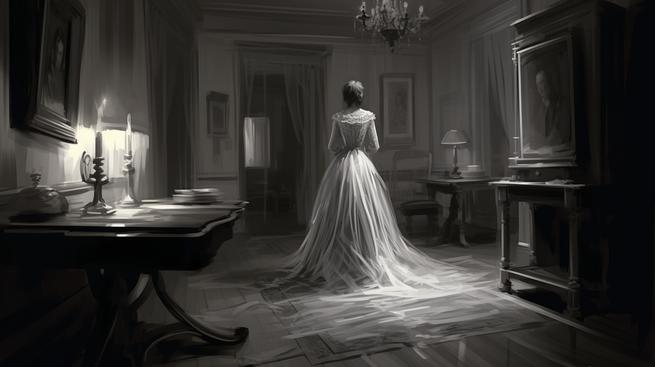
Victorian Village Historic District in Memphis, Tennessee, whispers tales of the city’s past, where the grandeur of the 19th century mingles with the echoes of long-gone residents. This neighborhood, a veritable time capsule, stands out as a testament to Memphis’s opulent history. The stately mansions lining the streets serve as the heart and soul of the district, each with its own story to weave into the fabric of local lore.
One cannot walk through Victorian Village without feeling the weight of history on their shoulders. The historic Woodruff-Fontaine House, now a museum, is said to be the abode of lingering spirits. Visitors and staff alike recount experiences with the unexplainable, alleging that Molly Woodruff, a former resident, still makes her presence known. They say her gentle spirit is like a whisper in the wind, an unseen hand guiding those who wander through the mansion’s opulent rooms.
The Mallory-Neely House, another jewel in the Victorian Village crown, stands as a monument to Memphis’s bygone era. Rumors swirl around this mansion like leaves in a tempest, with stories of ghostly figures seen in windows and unexplained sounds heard through the halls. The family’s history is etched into the very bones of the house, with each creaking floorboard and rustling curtain recounting a piece of Memphis’s spectral heritage.
But it’s not just the mansions that hold the secrets of Victorian Village. The entire district serves as a gateway to the past, inviting those with a penchant for the paranormal to explore its mysteries. The haunted history of Victorian Village is more than just ghost stories; it’s a rich tapestry of Memphis’s cultural and architectural legacy, a chapter in the story of a city that has seen its share of triumph and tragedy.
As the sun sets and shadows lengthen, the spirits of Victorian Village seem to stir. They say that to walk the district at twilight is to dance with ghosts, to share a fleeting moment with the echoes of those who once called Memphis home. It’s a place where the past is always present, and every cobblestone and corner tells a story. For those who listen closely, Victorian Village has a hauntingly beautiful tale to tell—one that lives on in the whispers of the Bluff City.
I heard that when you stroll through Victorian Village, especially near the old Woodruff-Fontaine House, you might feel a chill or catch a glimpse of Molly’s ghost, still hanging around her fancy old home. It’s like she’s just not ready to leave the place she loved, even though it’s been ages since she lived there.
Annesdale Mansion
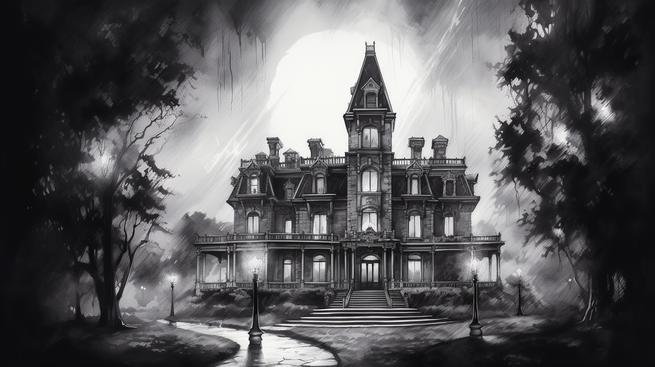
Annesdale Mansion in Memphis, Tennessee, stands as a grand relic of the past, shrouded in tales of the supernatural that ignite the imagination and send shivers down the spine. This historic gem, nestled on Lamar Avenue, has long been the subject of whispers about ghostly inhabitants and eerie occurrences that defy explanation.
The mansion’s haunting history dates back to the 19th century, when the stately home was erected in 1855 by Dr. Samuel Mansfield. The antebellum estate, with its sprawling grounds and Italianate architecture, became a beacon of opulence. However, it is said that with great beauty often comes great sorrow, and Annesdale is no exception to this adage.
Over the years, stories have circulated about spirits that roam its halls. Some say the original owner himself walks the mansion, unable to part with his beloved creation. Others believe that a bride, struck by tragedy on her wedding day, lingers in the mansion, her presence felt in the rustling of her gown or a glimpse of a veiled figure.
The mansion’s haunting allure reached new heights when, in 2016, the current proprietors stumbled upon what were thought to be human remains inside a fireplace. This grisly discovery sent ripples through the community and added a darker chapter to the mansion’s spectral lore. While the truth behind the remains has been lost to time, their discovery has only served to bolster the tales of Annesdale’s haunted reputation.
Today, Annesdale Mansion continues to stand as a monument to Memphis’s past, its walls echoing with the stories of yesteryear. Whether one believes in the spectral or not, the mansion is undeniably a touchstone of local legend, its history intertwined with the fabric of the city. Visitors and locals alike often refer to it as a place where the past is always present, a house where history has a heartbeat.
As the mansion endures, it serves not only as a chapter in the city’s history but also as a symbol of the enduring fascination with the supernatural. Annesdale Mansion, with its haunted history, remains a place where the veil between the living and the dead seems perilously thin, and the echoes of the past resonate in the stillness of the night.
I heard that the ol’ Annesdale Mansion is haunted, like there’s a ghost bride who never got to say “I do,” and now she just wanders around, rustling in her wedding dress and all. They say even the guy who built the place, Dr. Mansfield, can’t leave it behind and still shows up, walking the halls like he’s still the man of the house.
The Gayoso House
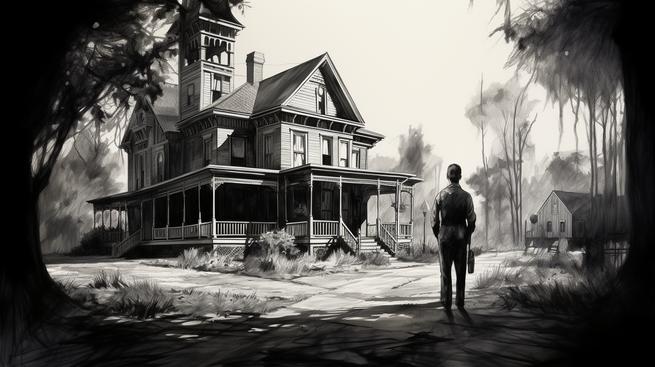
In the heart of Memphis, Tennessee, the Gayoso House stands as a testament to the city’s rich and, some say, haunted history. Built in 1842 by the affluent Don Manuel Gayoso de Lemos, this hotel was the epitome of luxury and southern charm in its heyday. However, it didn’t take long for tragedy to cast a shadow over its grand façade.
As the years rolled on, the Gayoso House bore witness to the ebb and flow of fortunes, becoming a magnet for tales of the supernatural. Guests and staff have often reported eerie encounters that would make even the bravest soul’s blood run cold. Whispers of a lady in white gliding through the halls with the grace of a bygone era or the forlorn wails of a child echoing through the night are as much a part of the building as its bricks and mortar.
One of the most chilling accounts is that of a gambler who met his untimely end at the hands of a rival. They say his restless spirit still wanders the rooms, forever playing a high-stakes game with the reaper. The air in these spaces grows thick with the ghostly residue of his desperation, with some guests swearing they can still hear the clatter of dice and the shuffling of cards.
The Gayoso House is not just a building; it’s a storied vessel carrying the weight of uncountable narratives, its walls echoing with the laughter and lament of ages. To step inside is to walk hand in hand with history, dancing a waltz with the whispers of the past. It’s a place where the line between the living and the dead blurs, and if you listen closely, the very floorboards seem to speak.
Despite its spectral reputation, the Gayoso House continues to be a jewel in Memphis’s crown. It’s a place where the past refuses to be forgotten, and every creak and groan of the timeworn structure is a story, begging to be told. Whether you’re a seeker of thrills or a history buff, the Gayoso House beckons with a ghostly finger, daring the curious to uncover its mysteries.
I heard folks say the old Gayoso House is haunted, like there’s this gambler dude who got done in and still hangs around, trying to win his last game. And let me tell ya, some nights you can almost hear the cards shuffling and feel a chill that ain’t from no AC.
The Hunt-Phelan Home
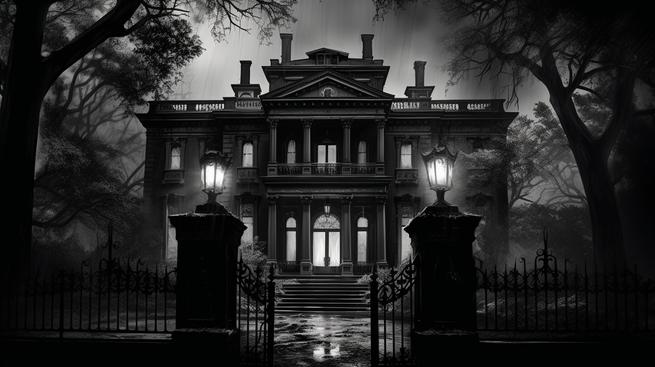
Hunt-Phelan Home in Memphis, Tennessee, is a beacon of Southern history with a spectral twist. Nestled behind an ornate iron gate, the grandeur of the Greek revival mansion is undeniable, and so are the whispers of its haunted past. Built between 1828 and 1830 by George H. Whyett, the 16-room reddish-brick structure originally lacked the impressive Ionic columns that now stand as sentinels at its entrance.
The mansion changed hands and saw the touch of renovation when Eli and Julia Driver took ownership in 1850. Their vision brought the house into the modern era of their time, moving from Federalist to Greek Revival architecture. As the Civil War raged, the house took on a pivotal role, reportedly serving as a station on the Underground Railroad. Secret tunnels hidden beneath the foundations may have been the paths to freedom for many slaves, as they made their desperate journey toward the boats bound for Illinois.
Local lore suggests that the home is still host to echoes from its storied past. The most persistent tale involves a devoted servant, whose loyalty transcended even the shackles of death. Entrusted with an important task, it’s said that his spirit is unable to rest, forever trying to complete the charge given to him in the 19th century. The servant’s presence is not one of malice but of steadfast duty, a poignant reminder of the home’s deep-rooted history.
Visitors and staff alike have reported strange occurrences, from disembodied footsteps to the feeling of being watched. The air sometimes carries the hum of hushed whispers, as if secrets of the old mansion are being exchanged just beyond the veil of perception.
The Hunt-Phelan Home stands today not just as a restored historical landmark but also as a treasure trove of haunting tales, its legacy forever entwined with the ghostly guardian who walks its halls. The mansion may be a house of history, but for those who believe, it’s also a house where the past never truly dies.
I heard folks say when you walk through the Hunt-Phelan Home, you might feel a chill or hear soft whispers from the old days, like the spirits of those runaway slaves are still hiding in the shadows, trying to find their way to freedom.





